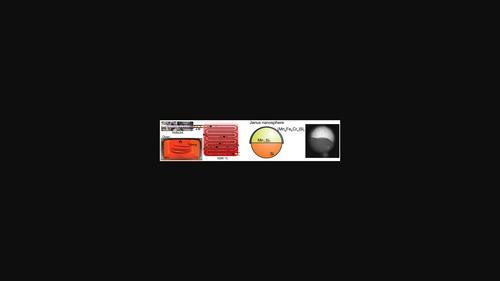HelixJet大气等离子体源制备自组装“Si/Mn4Si7合金”Janus纳米球结构的透射电镜研究
IF 3
4区 材料科学
Q3 CHEMISTRY, PHYSICAL
引用次数: 0
摘要
HelixJet大气等离子体辅助合成可以成为实现专用纳米颗粒结构(如Janus型形态)的新工具箱。硅烷分子分解产生的硅纳米颗粒直接进入飞行退火阶段。应用的高温提供了富含金属蒸气的气氛,其中含有锰,铬,铁和锡从用过的钢管中释放出来。金属原子合金成硅纳米颗粒,形成自组装的“Si/Mn x Si y合金”Janus纳米球结构。通过透射电子显微镜的分析能力,彻底检查了Janus颗粒纳米化学的细节。结合电子衍射、能谱分析和电子能谱分析,确定了Janus颗粒的组成,由一个纯Si半球与一个由薄(Mn a Fe b Cr c)Si y表面壳层覆盖的合金Mn 4 Si 7半球相连接。本文章由计算机程序翻译,如有差异,请以英文原文为准。

Transmission Electron Microscopy Investigation of Self‐assembled 'Si/Mn4Si7‐Alloy' Janus Nanosphere Architectures Produced by a HelixJet Atmospheric Plasma Source
Abstract The HelixJet atmospheric plasma‐assisted synthesis can be a new toolbox to realize dedicated nanoparticle architectures such as Janus‐type morphologies. Silicon nanoparticles produced by the decomposition of Silane molecules are directed into an in‐flight annealing stage. The applied high‐temperature supplies a metal vapor rich atmosphere containing Manganese, Chromium, Iron, and Tin outgassing from the used steel tube. The metal atoms alloy into the Silicon nanoparticles and form a self‐assembled 'Si/Mn x Si y ‐alloy' Janus nanosphere architecture. The Janus particles nanochemistry is thoroughly examined in detail by the analytic capabilities of transmission electron microscopy. The combined approach of electron diffraction, EDS, and EELS identifies the Janus particle composition consisting of a pure Si hemisphere interfaced to an alloyed Mn 4 Si 7 hemisphere covered by a thin (Mn a Fe b Cr c )Si y surface shell.
求助全文
通过发布文献求助,成功后即可免费获取论文全文。
去求助
来源期刊

Particle & Particle Systems Characterization
工程技术-材料科学:表征与测试
CiteScore
5.50
自引率
0.00%
发文量
114
审稿时长
3.0 months
期刊介绍:
Particle & Particle Systems Characterization is an international, peer-reviewed, interdisciplinary journal focusing on all aspects of particle research. The journal joined the Advanced Materials family of journals in 2013. Particle has an impact factor of 4.194 (2018 Journal Impact Factor, Journal Citation Reports (Clarivate Analytics, 2019)).
Topics covered include the synthesis, characterization, and application of particles in a variety of systems and devices.
Particle covers nanotubes, fullerenes, micelles and alloy clusters, organic and inorganic materials, polymers, quantum dots, 2D materials, proteins, and other molecular biological systems.
Particle Systems include those in biomedicine, catalysis, energy-storage materials, environmental science, micro/nano-electromechanical systems, micro/nano-fluidics, molecular electronics, photonics, sensing, and others.
Characterization methods include microscopy, spectroscopy, electrochemical, diffraction, magnetic, and scattering techniques.
 求助内容:
求助内容: 应助结果提醒方式:
应助结果提醒方式:


